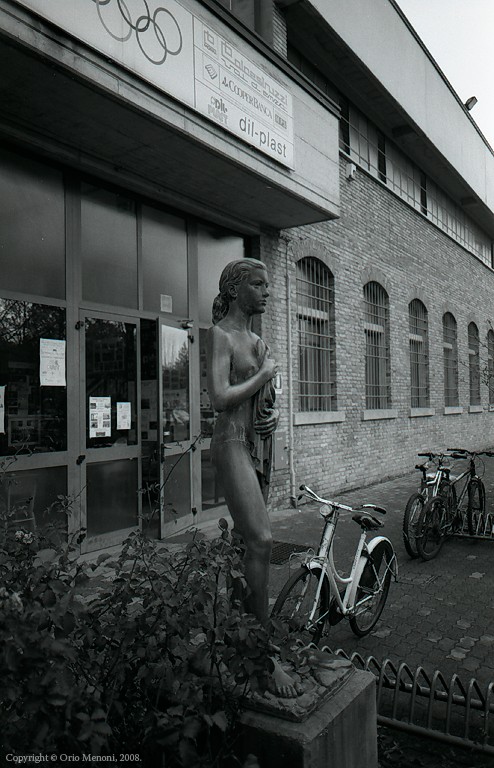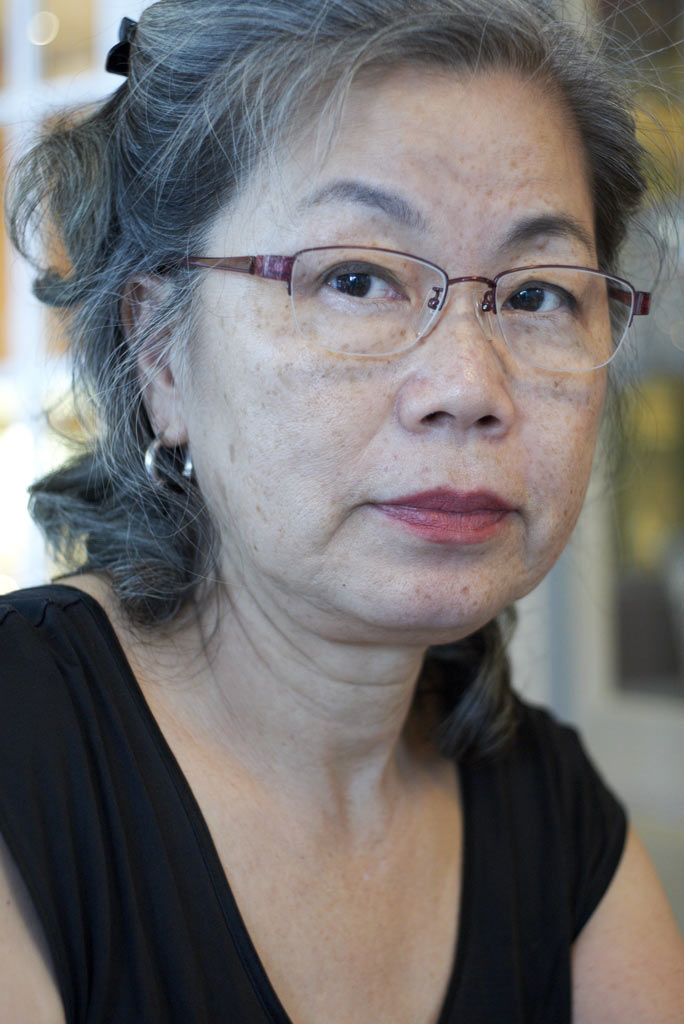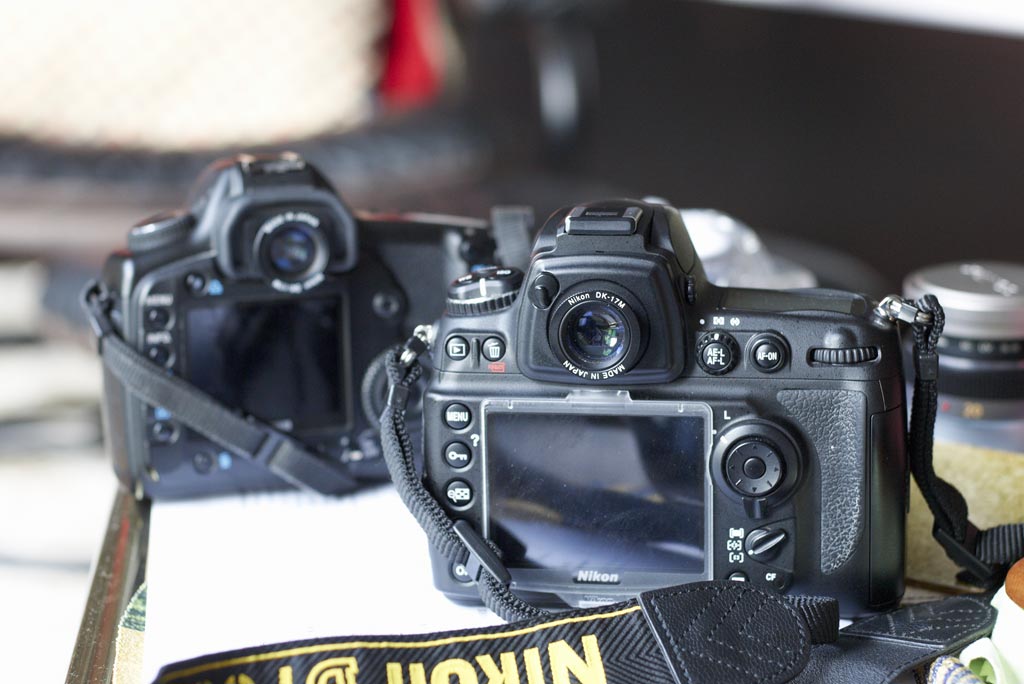| View previous topic :: View next topic |
| Author |
Message |
Schnauzer


Joined: 09 Apr 2008
Posts: 2155
Location: Maine, USA
Expire: 2012-03-08
|
 Posted: Thu May 07, 2009 10:52 pm Post subject: Contax G1 or G2 lenses Posted: Thu May 07, 2009 10:52 pm Post subject: Contax G1 or G2 lenses |
 |
|
Schnauzer wrote:
Is their an adapter to fit Contax G1 or G2 lenses to EOS?
_________________
Ron |
|
| Back to top |
|
 |
Orio

Joined: 24 Feb 2007
Posts: 29545
Location: West Emilia
Expire: 2012-12-04
|
 Posted: Thu May 07, 2009 11:14 pm Post subject: Posted: Thu May 07, 2009 11:14 pm Post subject: |
 |
|
Orio wrote:
No, not as I know.
First there is the problem of the register distance (one should need to remove the mirror from the EOS camera to focus at infinite)
Secondly, the adapter would probably be complicated, because the G mount has a strange thing that makes the lenses' aperture rings work "out of scale" (so to say) until they are locked in onto the camera. The adapter should replicate this condition, and I don't know if that would be easy or difficult to do.
_________________
Orio, Administrator
T*
NE CEDE MALIS AUDENTIOR ITO
Ferrania film is reborn! http://www.filmferrania.it/
Support the Ornano film chemicals company and help them survive!
http://forum.mflenses.com/ornano-chemical-products-t55525.html |
|
| Back to top |
|
 |
Schnauzer


Joined: 09 Apr 2008
Posts: 2155
Location: Maine, USA
Expire: 2012-03-08
|
 Posted: Thu May 07, 2009 11:17 pm Post subject: Posted: Thu May 07, 2009 11:17 pm Post subject: |
 |
|
Schnauzer wrote:
Thanks Orio.
_________________
Ron |
|
| Back to top |
|
 |
F16SUNSHINE


Joined: 20 Aug 2007
Posts: 5486
Location: Left Coast
Expire: 2011-11-18
|
 Posted: Thu May 07, 2009 11:48 pm Post subject: Posted: Thu May 07, 2009 11:48 pm Post subject: |
 |
|
F16SUNSHINE wrote:
I had a G45 adapted to M mount RF).
Also there is a way to adapt the G2.8/90 Sonnar to M42.
I think there is a Tutorial in the equipment gallery of the process.
Koji did one conversion. Maybe search his posts.
For that sonnar it is better to buy the C/Y 2.8/85 version. I think it's the same lens. I have one coming up if the person it was offered to declines. Rarish MMG version.
Maybe it's worth it. You can buy a EX one from KEH for about $100.
These poor G lenses will be orphans one day. Damn AF system makes them unusable unless put into a helicoid. 
Here is the Pbase page Koji made of the Mod
http://www.pbase.com/kkawakami/g90_mods
And here is a thread with a mod for Nikon mount
http://forum.mflenses.com/contax-g-90mm-f2-8-to-nikon-ai-mount-t9620.html
_________________
Moderator |
|
| Back to top |
|
 |
mUg


Joined: 13 Dec 2008
Posts: 128
|
 Posted: Fri May 08, 2009 12:13 am Post subject: Posted: Fri May 08, 2009 12:13 am Post subject: |
 |
|
mUg wrote:
If i recall correctly, the Contax G2 mount is 15mm shorter than the Canon Eos one. Probably they adopted such short length to shorten the entire camera+lens size...Contax G lenses are my dream too. Too bad they can be used only on the G cams which still cost pretty much (although not as much as in the past). |
|
| Back to top |
|
 |
F16SUNSHINE


Joined: 20 Aug 2007
Posts: 5486
Location: Left Coast
Expire: 2011-11-18
|
 Posted: Fri May 08, 2009 12:17 am Post subject: Posted: Fri May 08, 2009 12:17 am Post subject: |
 |
|
F16SUNSHINE wrote:
One more link. This for L mount or M mount RF shooters.
This fellow did my G45 to Leica M. A super quality job lthough a bit unconvetional to look at (I love that).
Scroll down the list you will see he can re-mount anything from these G-lenses to Yashica Electro lenses or Nikon P+S 28mm 
Click on modifications link to go to the right page.
http://translate.google.com/translate?hl=en&sl=ja&u=http://www.hayatacamera.co.jp/&sa=X&oi=translate&resnum=1&ct=result&prev=/search%3Fq%3Dhttp://www.hayatacamera.co.jp/index.html%26hl%3Den%26safe%3Doff%26client%3Dsafari%26rls%3Den
_________________
Moderator |
|
| Back to top |
|
 |
Schnauzer


Joined: 09 Apr 2008
Posts: 2155
Location: Maine, USA
Expire: 2012-03-08
|
 Posted: Fri May 08, 2009 12:43 am Post subject: Posted: Fri May 08, 2009 12:43 am Post subject: |
 |
|
Schnauzer wrote:
After looking at and reading all of this, I think a person is better off to just buy C/Y or m42.
_________________
Ron |
|
| Back to top |
|
 |
Schnauzer


Joined: 09 Apr 2008
Posts: 2155
Location: Maine, USA
Expire: 2012-03-08
|
 Posted: Fri May 08, 2009 1:04 am Post subject: Posted: Fri May 08, 2009 1:04 am Post subject: |
 |
|
Schnauzer wrote:
I don't know the lenses that well. What is the difference between a sonnar and a planar? Which is the better lense?
_________________
Ron |
|
| Back to top |
|
 |
koji


Joined: 21 Jul 2008
Posts: 2107
Location: Hiroshima, Japan
Expire: 2012-12-27
|
 Posted: Fri May 08, 2009 1:29 am Post subject: Posted: Fri May 08, 2009 1:29 am Post subject: |
 |
|
koji wrote:
Contrary to what Andy said about the difference between G-Sonnar 90/2.8
and C/Y Sonnar 85/2.8, they are optically very similar but their performances
are a bit different. G-Sonnar is much superior than C/Y Sonnar 85mm, BUT
practically speaking it is better to buy C/Y Sonnar 85/2.8 since adapted/modified
(M42 mount) G-Sonnar is not easy to use. (please check PHOTODO for this,
though this site is also sometime dubious too  ) )
I am using film(s) these weeks, using now Contax AX with the above modified
G-Sonnar 90mm together with G2+Planar 35/2 along side. Will show the results
if they are okay, including the shots in Denver Colorado USA in the past week.
The films are in EDP shop now, remember the word EDP shop?! 
G1/2 lenses are all pretty good, probably the best one is Planar 45/2 and least
expensive too. 
I like G-Planar 35/2 personally, G-Biogon 21mm is the best 21mm regardless of
the mount IMO. See a proof> http://www.pbase.com/kkawakami/image/109363740
_________________
Our Home Page has 18,200 photos in 575 directories today.
Lenses: https://www.pbase.com/kkawakami/top_level_my_lenses
Last edited by koji on Fri May 08, 2009 2:19 am; edited 1 time in total |
|
| Back to top |
|
 |
Schnauzer


Joined: 09 Apr 2008
Posts: 2155
Location: Maine, USA
Expire: 2012-03-08
|
 Posted: Fri May 08, 2009 1:51 am Post subject: Posted: Fri May 08, 2009 1:51 am Post subject: |
 |
|
Schnauzer wrote:
Thanks for the info Koji.
_________________
Ron |
|
| Back to top |
|
 |
Orio

Joined: 24 Feb 2007
Posts: 29545
Location: West Emilia
Expire: 2012-12-04
|
 Posted: Fri May 08, 2009 7:04 am Post subject: Posted: Fri May 08, 2009 7:04 am Post subject: |
 |
|
Orio wrote:
| Schnauzer wrote: |
| I don't know the lenses that well. What is the difference between a sonnar and a planar? Which is the better lense? |
they are different optical schemes and it's hard to say which one is better, it largely depends on the personal taste.
Sonnar is used for tele lenses (with the exception of the 50mm for the Contax rangefinder). Planar has a wider range of application, from moderate wides to medium teles.
The Sonnar scheme has less glass-air surfaces. It would offer better contrast than the Planar - however, with the technology of the multi-coating, this difference is pretty much a thing of the past.
Planars can be faster than Sonnars - and that is their main merit (and the reason they cost more).
Aesthetically, they produce different images. Both are sharp. The Sonnar however has a more pleasing bokeh and smoother colours. The Planar has more punch and more of that "3D" look.
_________________
Orio, Administrator
T*
NE CEDE MALIS AUDENTIOR ITO
Ferrania film is reborn! http://www.filmferrania.it/
Support the Ornano film chemicals company and help them survive!
http://forum.mflenses.com/ornano-chemical-products-t55525.html |
|
| Back to top |
|
 |
Orio

Joined: 24 Feb 2007
Posts: 29545
Location: West Emilia
Expire: 2012-12-04
|
 Posted: Fri May 08, 2009 7:09 am Post subject: Posted: Fri May 08, 2009 7:09 am Post subject: |
 |
|
Orio wrote:
| koji wrote: |
I like G-Planar 35/2 personally, G-Biogon 21mm is the best 21mm regardless of
the mount IMO. |
I cast my vote for the most forgotten of them, the Biogon 28.
In my opinion, it comes as close to perfect architectural rendition, as a lens can get. See this image:

No Photoshop correction in there. If you take an architect instrument and measure those diagonals, you will find them perfect.
You could trace them and port them directly into a geometrical drawing.
I have yet to find another wide angle lens that performs like this.
_________________
Orio, Administrator
T*
NE CEDE MALIS AUDENTIOR ITO
Ferrania film is reborn! http://www.filmferrania.it/
Support the Ornano film chemicals company and help them survive!
http://forum.mflenses.com/ornano-chemical-products-t55525.html |
|
| Back to top |
|
 |
Schnauzer


Joined: 09 Apr 2008
Posts: 2155
Location: Maine, USA
Expire: 2012-03-08
|
 Posted: Fri May 08, 2009 12:50 pm Post subject: Posted: Fri May 08, 2009 12:50 pm Post subject: |
 |
|
Schnauzer wrote:
Thank you Orio.
Zeiss has so many its confusing when its new to you. Biogon, planer, sonnar, tessar and probable others.
_________________
Ron |
|
| Back to top |
|
 |
koji


Joined: 21 Jul 2008
Posts: 2107
Location: Hiroshima, Japan
Expire: 2012-12-27
|
 Posted: Fri May 08, 2009 1:18 pm Post subject: Posted: Fri May 08, 2009 1:18 pm Post subject: |
 |
|
koji wrote:
Yes, Orio. G-Biogon 28mm is a near perfect lens, alas their AF system in
G-bodies is a weakest link. I guess those superb lenses are not deserved
such treatment, that is why some convert them to M-mount. 
But I still use and love G1 & 2 cameras, this summer I will consume more films
for these lenses. 
_________________
Our Home Page has 18,200 photos in 575 directories today.
Lenses: https://www.pbase.com/kkawakami/top_level_my_lenses
Last edited by koji on Fri May 08, 2009 1:24 pm; edited 1 time in total |
|
| Back to top |
|
 |
Orio

Joined: 24 Feb 2007
Posts: 29545
Location: West Emilia
Expire: 2012-12-04
|
 Posted: Fri May 08, 2009 1:23 pm Post subject: Posted: Fri May 08, 2009 1:23 pm Post subject: |
 |
|
Orio wrote:
| Schnauzer wrote: |
Thank you Orio.
Zeiss has so many its confusing when its new to you. Biogon, planer, sonnar, tessar and probable others. |
I think there should be a FAQ about it somewhere, anyway here's the basic:
Anastigmat (Protar) = one of the very first, if not the first, of the Zeiss lenses. If I remember correctly it was a symmetrical scheme with two groups of two elements each
Planar = as old as (I think) 1896, invented by Paul Rudolph, it is a "double Gauss" design, the rest of the characteristics I already described
Sonnar = a relatively fast optical scheme born to replace the Planar which (at the time) could not be used because of loss of contrast. The classic Sonnar scheme has 6 elements in 3 groups, one of which cemented. It was however often modified with the time. I described the characteristic already
Triotar = a triplet (three elements) scheme, based on the Cooke triplet. Used for both standard and tele lenses. Can be very sharp and, if well made, also have good control of aberrations. It is usually not very fast.
Tessar = an evolution of the Cooke triplet, it uses four lenses for better correction. It is the most successful and copied of all optical schemes ever. Still in use today, because it's cheap and high quality. It's been used for moderate wides and for standard lenses. The main feature is the great sharpness when stopped down. However it is slow, and tends to be soft wide open.
Tele-Tessar = it's bsically the Tessar scheme adapted for tele lenses. It often has one or two elements more than the standard Tessar
Biogon = rectilinear wide angle scheme, it is the most successful of all rangefinder wide angle lenses. It is not applicable on reflex cameras because it needs proximity to the film plane. The main feature of the Biogons is the almost perfect control of distortion. The weak point is the light falloff at corners wide open
Distagon = rectilinear wide angle scheme, build with retrofocus, i.e. on the back of the lens there is what is basically an inverted tele lens scheme. This allows to make wide angle and super wide angle lenses while keeping enough distance from the film plane to accomodate the mirror of reflex cameras. Today Zeiss is also making Distagons for rangefinder because it has less vignetting than the Biogon
Biotar = It's a double gauss scheme that is similar to Planar. A technician would be able to explain the differences, I am not 
Biometar = it's sort of a crossover between Planar and Sonnar, basically it's a Planar with a Sonnar cemented group in it - certainly to save on production costs. It was only built by the Jena (DDR) factory
Pancolar = it's more or less the Jena equivalent of Planar
Flektogon = it's the Jena equivalent of the Distagon concept
_________________
Orio, Administrator
T*
NE CEDE MALIS AUDENTIOR ITO
Ferrania film is reborn! http://www.filmferrania.it/
Support the Ornano film chemicals company and help them survive!
http://forum.mflenses.com/ornano-chemical-products-t55525.html |
|
| Back to top |
|
 |
Schnauzer


Joined: 09 Apr 2008
Posts: 2155
Location: Maine, USA
Expire: 2012-03-08
|
 Posted: Fri May 08, 2009 8:38 pm Post subject: Posted: Fri May 08, 2009 8:38 pm Post subject: |
 |
|
Schnauzer wrote:
Good lord, there are even more than I thought.
This should be made a sticky.
Thank you.
_________________
Ron |
|
| Back to top |
|
 |
Farside


Joined: 01 Sep 2007
Posts: 6557
Location: Ireland
Expire: 2013-12-27
|
 Posted: Fri May 08, 2009 10:53 pm Post subject: Posted: Fri May 08, 2009 10:53 pm Post subject: |
 |
|
Farside wrote:
Thanks for that, Orio. I was unsure of the hierarchy of them.
_________________
Dave - Moderator
Camera Fiend and Biograph Operator
If I wanted soot and whitewash I'd be a chimney sweep and house painter.
The Lenses of Farside (click)
BUY FRESH FOMAPAN TO HELP KEEP THE FACTORY ALIVE ---
Foma Campaign topic -
http://forum.mflenses.com/foma-campaign-t55443.html
FOMAPAN on forum -
http://www.mflenses.com/fs.php?sw=Fomapan
Webshop Norway
http://www.fomafoto.com/
Webshop Czech
https://fomaobchod.cz/inshop/scripts/shop.aspx?action=DoChangeLanguage&LangID=4 |
|
| Back to top |
|
 |
djmike


Joined: 01 Apr 2009
Posts: 930
Location: Taiwan
|
 Posted: Fri May 08, 2009 11:30 pm Post subject: Posted: Fri May 08, 2009 11:30 pm Post subject: |
 |
|
djmike wrote:
Thanks Orio. Good and quick summary of differences among CZ.
_________________
DSLR: Canon 400D
SLR: Nikon FM2 + Canon A-1 + Canon AE1-P + Praktica MTL-5B + Pentax Spotmatic F + Fujica ST801 + Voigtlander Bassematic + Voigtlander Vito + Rollei 35S + Rolleiflex SL35 ME + Canon QL17 GIII + Olympus Pen EE-3
Lenses
M42: CZJ Flektogon 35/2.4 + CZJ Flektogon Zebra 35/2.8 + CZJ Pancolar 50/1.8 + CZJ Sonnar 135/3.5 + CZJ Tessar 50/2.8 Chrome + Pentacon 135/2.8 + Pentacon 50/1.8 + SMC Takumar 50/1.4 + SMC Takumar 55/2 + SMC Takumar 135/3.5 + Fujinon 55/1.8 + Jupiter-9 85/2 + Jupiter-37A 135/3.5 + Helios 44-6 58/2
Nikor: Nikkor 50/1.4 + Nikkor 28/3.5 + Nikkor 35-105 Zoom + 36-72 Series E Zoom
Canon: Canon FD + 28/2.8 + 50/1.8 + Canon 35-105 Macro Zoom
Other: Rollei Planar HFT 50/1.8
|
|
| Back to top |
|
 |
wilson.c


Joined: 18 Jan 2010
Posts: 364
Location: Hong Kong
|
 Posted: Tue Mar 02, 2010 10:48 am Post subject: Posted: Tue Mar 02, 2010 10:48 am Post subject: |
 |
|
wilson.c wrote:
Here's a link to a nice bit of conversion for the Contax-G 90 Sonnar to EOS. It's in Chinese though, but I think the photos say it all.
http://www.bootek.com/cgi-bin/ut/topic_show.cgi?id=2160&pg=1&bpg=1
It uses the original Contax-G helicoid, but is not as flexible as Koji's solution to M42.
_________________
Wilson
DSLR: Canon 5DMkII, 500D + Panasonic GF-1
SLR: Canon T90, Canon F1, Canon A1, Canon AE1 + Rolleiflex SL66 + Bronica ETRs
R'finder: Contax G1, G2 + Leica M6, M3 + Contax II
Lenses
M42: Angenieaux 90/1.8
Canon: FD 50/3.5 Macro, FD 80/1.8, FD 80-200L/4
Contax G: CZ Hologon 16/8, CZ Biogon 21/2.8, CZ Biogon 28/2.8, CZ Planar 45/2.0, CZ Sonnar 90/2.8
P-Six: CZJ Sonnar 180/2.8, CZJ Biometar 120/2.8
Contax: Distagon 28/2.8, Distagon 28/2, Planar 85/1.4, Makro-Planar 100/2.8
Others: CZ Sonnar 135/3.5 (Hasselblad V mount)
More little ones to be documented.
|
|
| Back to top |
|
 |
justtorchit


Joined: 12 Oct 2009
Posts: 269
Location: St. Louis, MO
|
 Posted: Tue Mar 02, 2010 4:12 pm Post subject: Posted: Tue Mar 02, 2010 4:12 pm Post subject: |
 |
|
justtorchit wrote:
Orio-
great summary there! I too was relatively unfamiliar with the CZ optics and seeing as there are so many people on this forum using them, I often find myself completely lost.
_________________
David
www.davidkovaluk.com - personal website
www.instagram.com/davidkovaluk
http://makingnottaking.blogspot.com/ - photoblog |
|
| Back to top |
|
 |
aleksanderpolo


Joined: 24 Jan 2010
Posts: 684
|
 Posted: Tue Mar 02, 2010 4:30 pm Post subject: Posted: Tue Mar 02, 2010 4:30 pm Post subject: |
 |
|
aleksanderpolo wrote:
Thank you Orio, that's very helpful. I have bookmarked this...
Koji, do you see any difference between the G 45 and C/Y 50? I've heard some claiming that G 35 is not up to the standard of other G lens, it might be true in MTF, but I wonder if the difference in performance is noticeable in real life?
_________________
Panny GF1
Looking for: More articles to read
Current lens:
m4/3: 20/1.7; 14-45/3.5-5.6
C/Y: CZ 28/2.8; CZ 35/2.8; CZ 50/1.4
G: 45/2; 90/2.8
M: CV 35/1.4
Rollei: 50/1.8
m42: S-M-C Tak 50/1.4, Helios 44-2
F: AI 28/2; AIS 35/2; AIS 50/1.4; E 50/1.8
FL: 55/1.2
FD: Vivitar(Komine CF) 28/2; Kiron 28/2; nFD 50/1.4; nFD 35-105/3.5-4.5
AR: 40/1.8; 50/1.4; Adaptall 35-80/2.8-3.5
MD: Vivitar(Kiron) 24/2; MD 50/1.4
OM: 21/3.5; 24/2.8; 50/1.4; 135/3.5 |
|
| Back to top |
|
 |
koji


Joined: 21 Jul 2008
Posts: 2107
Location: Hiroshima, Japan
Expire: 2012-12-27
|
 Posted: Tue Mar 02, 2010 6:31 pm Post subject: Posted: Tue Mar 02, 2010 6:31 pm Post subject: |
 |
|
koji wrote:
Yes, G35 has weakness at its wide open. It is getting better from F4 and up,
and extremely sharp too. But I like its dreamy image at its WO (wide open).
Recently I used G35 with Pana's GF1, it does perform quite well.
Both were shot at ISO 200, 1/30 handheld, real life shots. EFoV is ~70mm.
Of course at its wide open...


Difference between G45 and C/Y 50 is beyond my ken. 
BTW, G45 at its WO shot >

This G45 has usual Zeiss 3D-ness and has very nice bokeh, I mean it has none harshness and its creamy bokeh
does not looses too much what the object is. Like this (Fuji Reala + Contax G2) at both WO>


_________________
Our Home Page has 18,200 photos in 575 directories today.
Lenses: https://www.pbase.com/kkawakami/top_level_my_lenses |
|
| Back to top |
|
 |
aleksanderpolo


Joined: 24 Jan 2010
Posts: 684
|
 Posted: Tue Mar 02, 2010 7:14 pm Post subject: Posted: Tue Mar 02, 2010 7:14 pm Post subject: |
 |
|
aleksanderpolo wrote:
Thank you Koji, your gallery at pbase is a great resource.
_________________
Panny GF1
Looking for: More articles to read
Current lens:
m4/3: 20/1.7; 14-45/3.5-5.6
C/Y: CZ 28/2.8; CZ 35/2.8; CZ 50/1.4
G: 45/2; 90/2.8
M: CV 35/1.4
Rollei: 50/1.8
m42: S-M-C Tak 50/1.4, Helios 44-2
F: AI 28/2; AIS 35/2; AIS 50/1.4; E 50/1.8
FL: 55/1.2
FD: Vivitar(Komine CF) 28/2; Kiron 28/2; nFD 50/1.4; nFD 35-105/3.5-4.5
AR: 40/1.8; 50/1.4; Adaptall 35-80/2.8-3.5
MD: Vivitar(Kiron) 24/2; MD 50/1.4
OM: 21/3.5; 24/2.8; 50/1.4; 135/3.5 |
|
| Back to top |
|
 |
|
|
|
You cannot post new topics in this forum
You cannot reply to topics in this forum
You cannot edit your posts in this forum
You cannot delete your posts in this forum
You cannot vote in polls in this forum
|
